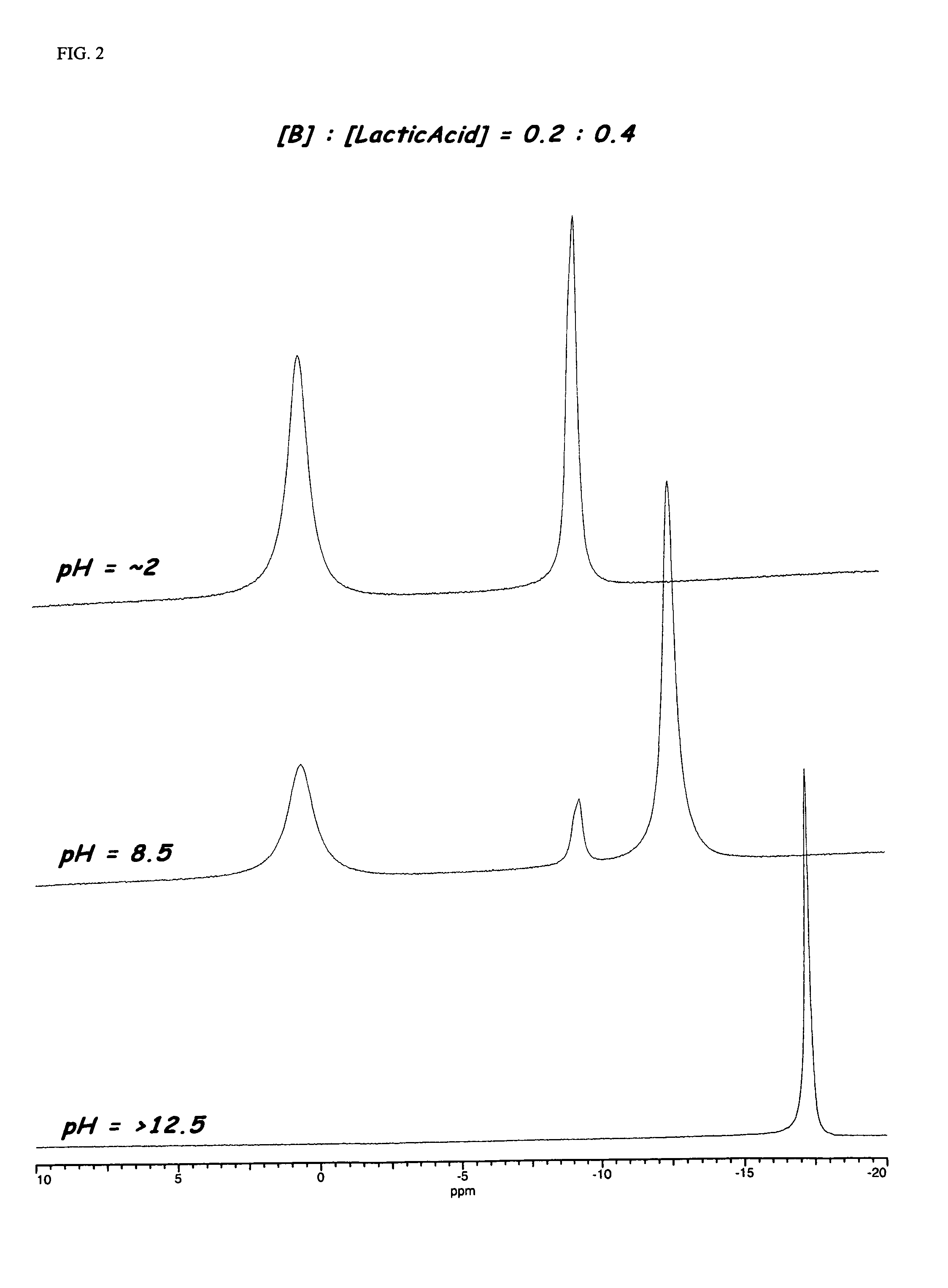Enzyme stabilization
a technology of enzymes and stabilization, which is applied in the direction of enzyme stabilization, detergent compounding agents, hair cosmetics, etc., can solve the problems of autolysis and proteolysis in the formulation, the stability of enzymes in the formulation, and the loss of activity of mylolytic and other enzymes commonly employed in deterrent compositions, etc., to improve the shelf life of various liquid formulations, improve the stability of enzyme-containing liquid compositions, and improve the shelf life of even very di
- Summary
- Abstract
- Description
- Claims
- Application Information
AI Technical Summary
Benefits of technology
Problems solved by technology
Method used
Image
Examples
example 1
[0081]In this example several detergent compositions containing enzymes (lipase and protease) were analyzed for residual enzymes activities upon storage.
[0082]The ingredients of several heavy-duty liquid detergent compositions in accordance with this invention are set forth below in Table 1. An explanation of the abbreviations used in Table 1 and the sources of the ingredients are given below:
[0083]MEA LAS: C10-13 linear alkyl benzene sulfonic acid salt with monoethanolamine. Marlon AMX sourced from Huels AG (Schweiz)
[0084]Oleic acid: sourced from Hydrior AG
[0085]Coconut acid: C12-14 fatty acid sourced from Hydrior AG
[0086]Dobanol 45 E 7: C14-15 alkyl ethoxylate (7) from Shell Chemical Company
[0087]Citric acid: sourced from Fluka
[0088]Boric acid: sourced from Fluka
[0089]Ethanol: sourced from Fluka
[0090]MPG: monopropyleneglycol sourced from Fluka
[0091]CaCl2: Calcium Chloride sourced from Fluka
[0092]Lipolase: lipase enzyme—Lipolase 100 L sourced from Novozymes
[0093]Savinase 16 L Type ...
example 2
[0104]This example demonstrates residual lipase and protease activity upon storage in an enzymatic premix. The ingredients of an enzymatic composition in accordance with this invention are set forth below in Table 2. An explanation of the abbreviations used in Table 2, and the ingredients sources is given below:
[0105]Lipolase 100 L: lipase enzyme sourced from Novozymes
[0106]Savinase 16 L Type EX: protease enzyme sourced from Novozymes
[0107]Boric acid: sourced from Fluka
[0108]DL-lactic acid: sourced from Fluka
[0109]The methods for residual protease and lipase activity versus time are described in EXAMPLE 1.
[0110]An enzymatic premix containing both protease and lipase was prepared. The premix contained high level of added water (above 70%). There was about a total of 7.5% mono-propylene glycol in the premix from the enzymes liquid raw materials. The pH of the enzymatic premixes was adjusted to pH 6 with low level of caustic. Despite the high water level, a polar solvent, and the prese...
example 3
[0113]The residual proteolytic activities of protease concentrates were measured after storage. The ingredients of the protease concentrates combined with this invention are set forth below in Table 3. An explanation of the abbreviations used in Table 3, and the sources of the ingredients are given below:
[0114]Na Formate: Sodium Formate
[0116]MPG: monopropylene glycol
[0117]Protease: a protease concentrate from GENENCOR INTERNATIONAL
[0118]Boric acid: sourced from Fluka
[0119]D,L-lactic acid: DL-lactic acid sourced from Fluka
[0120]Mandelic acid: DL-mandelic acid sourced from Malinckrodt Baker bv
[0121]The stability of a protease was evaluated with compounds of the invention and compared with a more traditional MPG based stabilization system normally used for this protease. Results of the residual protease activity, evaluated by Genencor International, of the three different samples are displayed in Table 3. The invention stabilized the protease enzyme in liqu...
PUM
| Property | Measurement | Unit |
|---|---|---|
| wt % | aaaaa | aaaaa |
| pH | aaaaa | aaaaa |
| pH | aaaaa | aaaaa |
Abstract
Description
Claims
Application Information
 Login to View More
Login to View More - R&D
- Intellectual Property
- Life Sciences
- Materials
- Tech Scout
- Unparalleled Data Quality
- Higher Quality Content
- 60% Fewer Hallucinations
Browse by: Latest US Patents, China's latest patents, Technical Efficacy Thesaurus, Application Domain, Technology Topic, Popular Technical Reports.
© 2025 PatSnap. All rights reserved.Legal|Privacy policy|Modern Slavery Act Transparency Statement|Sitemap|About US| Contact US: help@patsnap.com



